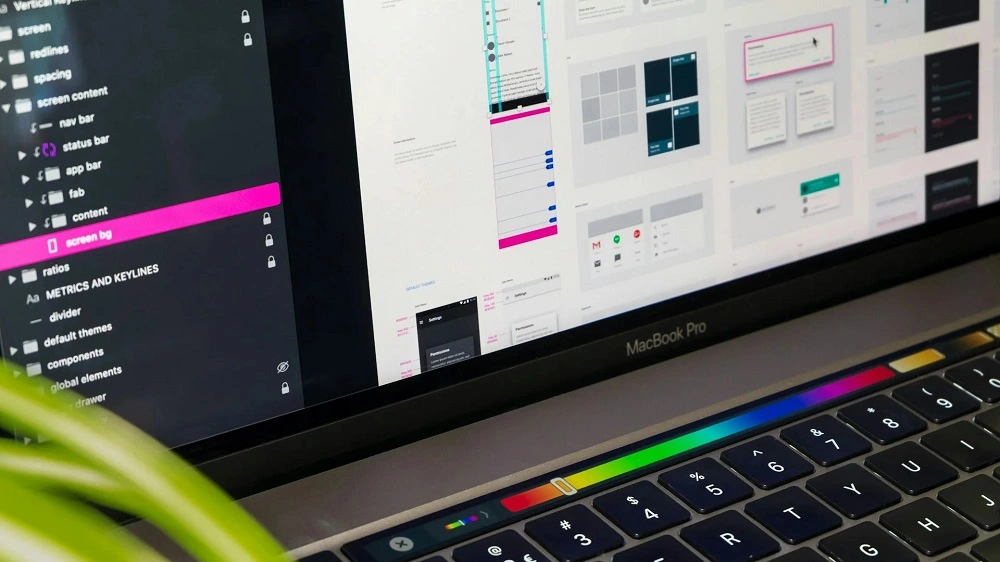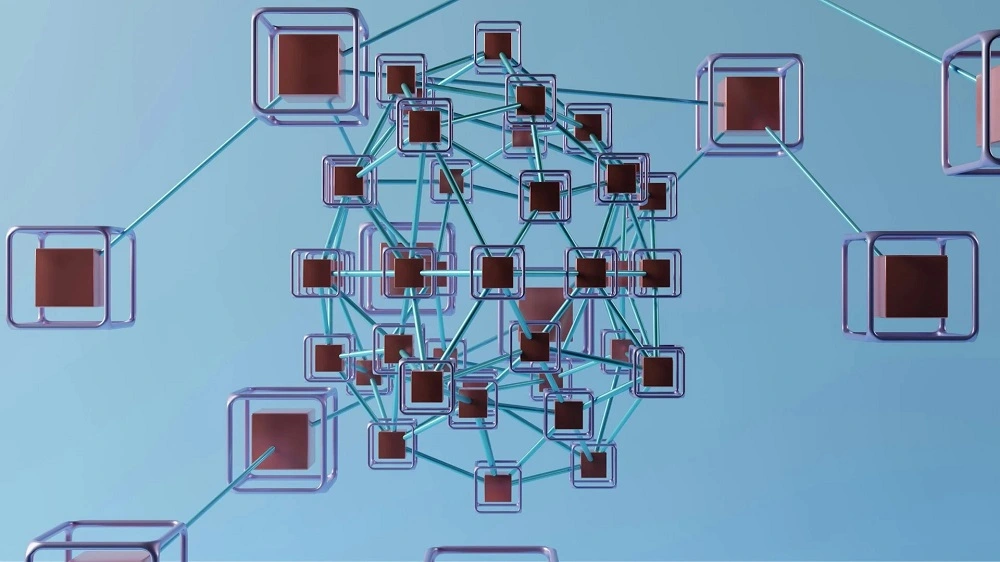In this blog post, Synodus sets out to clear up the confusion around Web3 development costs. By the end, you’ll have a clear understanding of how to not just estimate but also optimize your investment in Web3.
Web3 development cost breakdown by phase
Web3 development generally consists of 7 phases. Here’s a cost breakdown of each phase. It is estimated based on the average cost per hour of a Web3 developer, $53/hour, as reported by ZipRecruiter.
1. Planning and requirements analysis (5-10%)
Estimated pricing: $10,000 – $20,000
This phase is like creating a roadmap before starting your journey. It includes defining goals, researching the market, and setting the project strategy. Proper planning reduces risks but can add to costs.
2. Design (10-15%)
Estimated pricing: $10,000 – $20,000
This phase defines how your Web3 project will look and function. It starts with outlining the basic structure and user journey. Then, UI/UX design creates a visually appealing and easy-to-use interface. Finally, stakeholders review and finalize the design before moving forward.

High-quality, impressive UX/UI design costs more. It’s because skilled designers who can translate user needs into seamless interactions are expensive to hire.
3. Blockchain development (20-25%)
Estimated pricing: $40,000 – $55,000
The blockchain development phase often costs the most. Key activities of this phase include smart contract development, security audits, and blockchain node setup.
The more complex the blockchain integration is, the higher the cost. Developers must spend more time to ensure the application and decentralized networks work seamlessly together.
4. Front-end and back-end development (15-20%)
Estimated pricing: $30,000 – $40,000
Once blockchain development is done, developers connect the front-end and back-end. This challenging phase includes building what users see and how the system works behind the scenes.
The more complex the UI, the longer it takes. The design must work well with the back end to keep everything running smoothly. The costs in this phase depend on the tech used and your team’s skills.
With deep experience in front-end and back-end development, we know how to make this process faster. In a recent decentralized exchange project, we helped our partner launch in just 5 months, helping them stay ahead in the competition.
5. Security and testing (5-10%)
Estimated pricing: $10,000 – $20,000
After production, the Web3 application must be tested to ensure its security and reliability. This stage audits every component of the project, identifying any potential bugs or vulnerabilities. If issues are found, testers work with developers to fix them, making sure everything runs smoothly.
Depending on the method of testing, as well as the complexity of test components, the price of this phase varies. Since Web3 applications rely on decentralized technology and advanced logic, testing them is often more expensive than testing regular apps.
6. Deployment and integration (5-10%)
Estimated pricing: $10,000 – $20,000
Deployment of a Web3 application includes setting up hosting, registering the domain, and preparing the Web3 application for launch. This phase ensures the project is accessible to end-users after development and testing. All functions must be transitioned correctly from development to a live environment.
The cost of deploying a Web3 application is defined by the application complexity, hosting requirements, and domain registration costs. Additional tasks such as security enhancement, load balancing, and integration with existing services will add to the price.
7. Maintenance and updates (5-10%)
Estimated pricing: $10,000 – $20,000
A Web3 project is not complete after release. Maintenance is crucial to ensure the application runs smoothly. Periodical updates keep it secure and relevant amid evolving technologies.
The cost of this phase is hard to calculate. It depends on the run-time of the Web3 project, complexity, frequency of updates, and technology changes. Regular adaptation to evolving user preferences and market demands can also impact costs.
Web3 development cost by platform and type
The cost of your Web3 project can also be broken down by the blockchain platform you choose and the type of application you want to build.
Different platforms have different costs, and some types of Web3 apps are more complex (and expensive) to develop than others. Let’s breakdown these two in detail.

Web3 development cost by platform
The 8 most popular blockchain platforms are Ethereum, Binance Smart Chain (BSC), Polygon (Matic), Solana, Polkadot, Cardano, Tezos, and Avalanche. Each of them offers different features and pricing models, influencing the overall development cost.
For example, Ethereum is known for its strong smart contract capabilities but comes with high gas fees, while Solana offers faster transactions at lower costs but requires more specialized developers.
Below, we’ve put together a table to give you an idea of how much it costs to build on the top 8 blockchain platforms.
| Platform | Estimated price | Commonly used for |
|---|---|---|
| Ethereum | $100,000 – $400,000 | DeFi applications, NFTs, and DApps |
| Binance Smart Chain | $50,000 – $250,000 | DeFi applications |
| Polygon | $75,000 – $300,000 | Scaling Ethereum applications |
| Solana | $80,000 – $350,000 | High-performance DApps, DeFi and gaming applications |
| Polkadot | $90,000 – $350,000 | Interoperable blockchain projects |
| Cardano | $80,000 – $300,000 | Projects with a strong emphasis on sustainability, scalability, and interoperability in DApps and tokenization |
| Tezos | $70,000 – $280,000 | Projects emphasizing on-chain governance, formal verification, and security |
| Avalanche | $80,000 – $320,000 | Customizable blockchain applications and DeFi |
Web3 development cost by type
Beyond the platform choice, the type of Web3 application also significantly impacts development costs. A simple NFT marketplace is different from a complex DeFi platform or a play-to-earn game. The more features and security your app needs, the higher the cost.
Below, we’ll go over the estimated costs for six of the most common Web3 applications.
Decentralized applications (DApps)
Decentralized applications facilitate a multitude of activities. They’re most notably used to ensure the security and transparency of e-wallets, and exchange platforms, among a few other financial services.
A simple DApp costs around $10,000 and $40,000. Add more complexity and the price goes up. Blockchain platforms like Ethereum, Binance Smart Chain, and Polygon may additional transaction fees.
Decentralized finance (DeFi) platforms
DeFi platforms deliver financial services without intermediaries. These peer-to-peer financial systems use blockchain and cryptocurrencies to allow entities to transact directly with each other.
The cost of a DeFi platform is in the range of $55,000 and $200,000, depending on complexity. Advanced DeFi apps may even price up to $500,000.
Decentralized finance applications also require ongoing maintenance. Operational expenses like staff salaries, server costs, marketing, and legal fees should be considered in the budget.
Non-fungible tokens (NFTs) marketplaces
NFT marketplaces facilitate the buying and selling of, well, NFTs. These digital assets are worth a fortune, meaning security is a key priority. On average, it takes from $50,000 to $300,000 to develop a NFT trading platform.
Decentralized autonomous organizations (DAOs)
DAOs leverage smart contracts for decentralized decision-making. A typical DAO costs between $20,000 and $100,000 to develop governance systems and user interfaces. Legal fees add another $5,000 to $60,000, varying by jurisdiction.
Blockchain-based gaming
Blockchain technologies introduce new dynamics to gaming economies and assets. To develop a Web3 game, you’re looking at a price tag of $60,000 to $100,000. Some complex games with unique designs can even cost up to half a million dollars.
Blockchain integration, game development, and transaction fees are the three elements that make up the biggest proportion of the price.
Supply chain management solutions
Decentralized technologies are increasingly popular in logistics. They greatly improve the transparency and efficiency of supply chains.
Implementing the new Web3 power will set you back $100,000 to $600,000. Why is it more expensive than other applications? Because of its scale. The Web3 solutions must be synchronized across the supply chain, posing challenges in scale and complexity. Mandatory updates and staff training also add to the cost.
Other factors that impact web3 development cost
The cost of a Web3 project is controlled by numerous factors. Besides platforms, application types, and phases, the following four elements also greatly contribute to the final cost.
Project complexity and scope
How many functions the application has or how complex its logic is directly impacts its cost. Technically advanced projects require more intensive planning to clearly define all features. They also call for more comprehensive technologies and expert teams who can deliver the desired outcomes.
- Basic projects: $10,000 to $50,000
- Moderately complex projects with standard integration: $50,000 to $150,000
- Advanced projects with complete customization: $150,000 to $500,000 or more.
Level of customization
Projects that can use existing blocks or frameworks often cost less. This approach utilizes reusable elements to speed up development and cut costs. However, it does not inspire uniqueness.
Custom solutions, on the other hand, build everything from scratch. They take more time and resources but promise a one-of-a-kind application tailored to meet specific needs.
- Simple customization: $10,000 to $50,000
- Intermediate customization: $50,000 to $150,000
- Fully tailored solutions: $150,000 to $500,000 or more.
Security and compliance requirements
Industries such as finance and healthcare require stringent security protocols. They deal with sensitive data and must follow strict standards. Failing to address these may result in legal penalties or disruption of the project. However, implementing security measures and legal requirements is time-intensive, thus escalating the prices.
- Adding security frameworks: $10,000 to $150,000
- Ensuring regulatory compliance: $5,000 to $75,000

Development team expertise and location
Skilled teams are better equipped to anticipate potential challenges and implement effective solutions. They can deliver high-quality code with minimal revision. However, Web3 professionals charge more.
Normally, developers based in North America or Western Europe charge more than those in Eastern Europe or South East Asia. It’s because of the disparity in living standards. In most cases, you cannot notice a difference in code quality. However, communication and collaboration may be affected should you choose to outsource a distantly remote team.
The table below demonstrates the hourly rate of expert Web3 developers, as well as the average cost per project, of 7 popular regions worldwide.
| Region/Geolocation | Estimated cost per project ($) | Typical hourly rate ($/hour) |
|---|---|---|
| North America (USA/Canada) | $80,000 – $500,000 | $100 – $150 |
| Western Europe | $7,000 – $200,000 | $70 – $120 |
| Eastern Europe | $40,000 – $150,000 | $40 – $70 |
| Asia (Vietnam, China, etc.) | $25,000 – $80,000 | $20 – $40 |
| Latin America | $30,000 – $100,000 | $30 – $50 |
| Australia | $80,000 – $200,000 | $80 – $120 |
| Africa | $20,000 – $70,000 | $20 – $40 |
Hidden costs of web3 development
Hidden costs are not presented clearly. These often lurk in the background, secretly increasing the final Web3 development cost if overlooked. Common unseen factors include:
Smart contract audits
There’s no room for errors when it comes to smart contracts, especially ones used by large organizations. Once the smart contract is launched, it cannot be reviewed by developers, leaving undetected vulnerabilities permanent.
A smart contract audit analyzes code to identify security weak points, poor coding practices, and inefficient programming. This eliminates holes for hackers to target, which was exactly what happened with the decentralized investment fund DAO. Hackers exploited its vulnerable code and stole $50 million in 2016.
If the Web3 project uses smart contracts, a thorough code audit is a must. Typically, this will set you back $5,000 to $15,000. The audit consists of a line-by-line manual analysis with an automated test using a suite of tools. Higher code complexity will cost more to audit.
Scalability
Web3 development is a substantial investment. Naturally, you’d expect it to grow and produce results in the long run. However, due to the nature of decentralized technologies, your Web3 application may feel slower and cost more to operate as it expands.
Scalable solutions, such as layer protocols and sharding, exist. Yet, they take time to research, code, and implement. Integrating said solutions into existing systems is complicated and costly, often requiring a complete architecture overhaul.
On average, implementing scalable measures adds $5,000 to $10,000 to the project. This does not include ongoing updates, which cost $2,000 to $5,000 a month.
User education
Educating users is mandatory for Web3 applications. Tutorials or instruction manuals familiarize consumers with the product, showcasing its full capacity. Without adequate user education, you risk increased support queries and potential security issues. Normally, businesses should allocate $2,000 to $3,000 for building educational materials.
Infrastructure and hosting
Web3’s decentralized nature demands robust infrastructure. This includes blockchain-based storage and decentralized hosting solutions. Setting up and maintaining such infrastructure is costly, involving challenges in security, scalability, and node operations.
Infrastructure and hosting costs should be factored into project budgets. It may set you back $2,000 to $10,000 annually.
4 actionable tips to optimize web3 development costs
Overall, Web3 development is quite expensive. The technology is relatively new. It might take a while before it reaches the point of equilibrium, where it’s more affordable. However, there are several strategies that you can implement now to save budget on your next Web3 project. They are:
Define a clear scope and prioritize features
Starting with a Minimum Viable Product (MVP) should be a protocol for every Web3 project. It concentrates the requirements into a core set of features that deliver essential functionality. An MVP can also be used to test key assumptions and gather user feedback earlier in the development process. This approach leverages real-world data to identify features that truly matter.

Align with stakeholders to pinpoint features that offer the most value or competitive advantage. This targeted prioritization ensures you focus resources effectively and avoid allocating time and budget to low-impact areas. Concentrating on high-impact features streamlines development and delivers a product that meets user needs effectively.
Choose the right platform and tools
Carefully select a blockchain that matches your project requirements in terms of scalability, transaction costs, and ecosystem maturity. Consider layer-2 solutions or alternative chains like Binance Smart Chain or Polygon, which may offer cost advantages compared to Ethereum. This strategic choice can significantly influence your project’s financial outlay.
Utilize pre-existing libraries, tools, and frameworks to shorten development time and lower costs. Open-source code and SDKs offer robust components, eliminating the need to build functionalities from scratch. This leverage allows your team to focus on unique project aspects while maintaining high standards.
Engage experienced development partners
Opt for developers with specialized expertise in Web3 technologies. Experienced teams bring efficiency to project execution by avoiding common pitfalls and optimizing for performance. Their skill sets ensure your project runs smoothly, reducing time and budget wastage.
Exploring offshore or hybrid team models can result in significant cost savings, depending on your location and project scope. To make this approach work, establish clear communication channels and methodologies to navigate potential challenges arising from time zone differences or cultural diversity.
Implement efficient project management strategies
Embrace agile frameworks such as Scrum or Kanban for an iterative development process. These methodologies allow for continuous feedback and quick adaptation to changing requirements, preventing significant additional costs. Agile development keeps your project flexible and responsive to user needs.
Continuously assess project progress, resource use, and processes. Use project management tools to track deliverables, budgets, and timelines. Regular reviews enable quick adjustments, enhancing efficiency and optimizing resource allocation to stay within budgetary constraints.
Explore cost-effective web3 development by Synodus
Synodus is a pioneering leader in Web3 development, with 250+ blockchain experts and 9 years of experience delivering functional Web3 projects.
We understand the daily struggles of founders, from navigating blockchain regulations to optimizing smart contracts for security and efficiency. That’s why we use technologies like Layer 2 scaling, cross-chain solutions, and automated smart contract audits to speed up development while keeping costs low.
We have 2 smart ways to build your web3 product:
- Pre-built solutions with custom enhancements – Ideal for those who want to launch fast while keeping costs low. We take an existing framework and customize it to match your unique requirements.
- Full custom development from the ground up – Ideal for DeFi, GameFi, or NFT platforms needing scalability & full control.
One of our recent Web3 apps reached 3 million users in just 4 months while cutting processing time by 30%—proving that cost-effective development can still deliver high performance.
How you save money
- Avoid costly rework with early testing – Agile breaks development into small phases, allowing us to catch and fix issues early, preventing expensive late-stage fixes.
- Strategic planning for cost control – Waterfall ensures a well-defined roadmap, so we don’t waste resources on unnecessary features or last-minute scope changes.
- Launch faster, monetize sooner – Our structured MVP approach gets your product to market quickly, helping you attract investors and start generating revenue faster.
- Smart feature prioritization – Not every feature is essential in the first release. We focus on the 80% that truly matters, cutting unnecessary costs without compromising quality.
Wrapping up
We hope this blog post covers everything you need to know about Web3 development costs. Yes, the investment can be substantial. However, decentralized technologies are evolving – presenting unique opportunities for businesses to excel ahead of the competition.
The key to maximizing the ROI of your next Web3 project is focusing on high-impact features. Defining core functions reveals suitable tech stacks as well as the most efficient resource management strategies.
Still have questions about Web3 development? Book a free consultation with our experts. We’re more than happy to accompany you on this journey.
How useful was this post?
Click on a star to rate it!
Average rating / 5. Vote count:
No votes so far! Be the first to rate this post.




